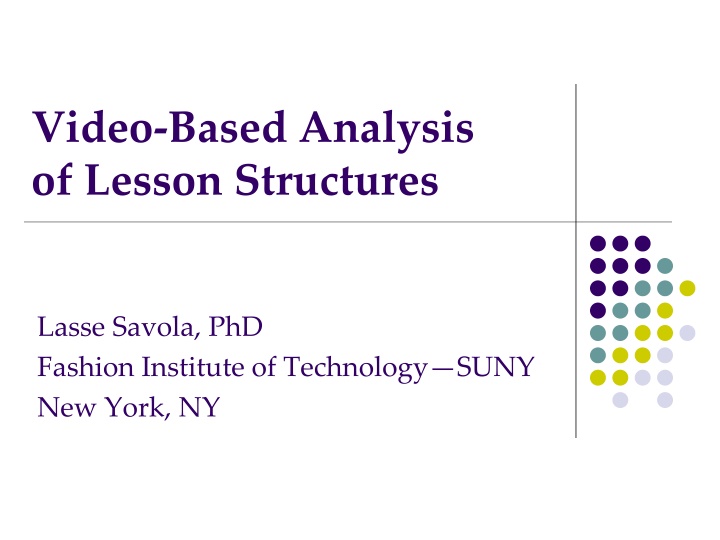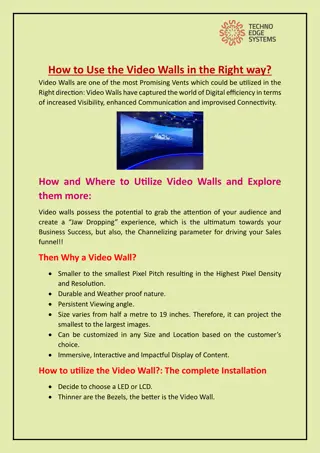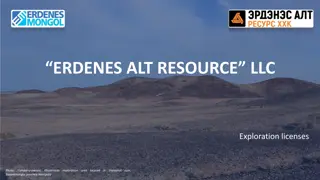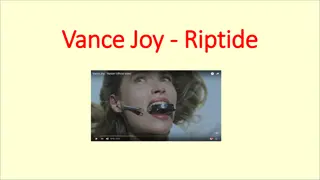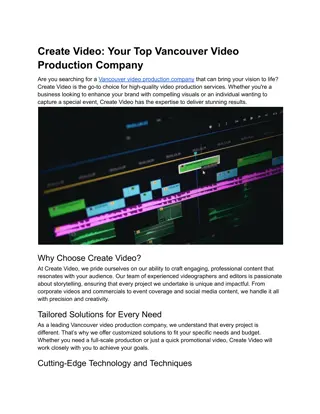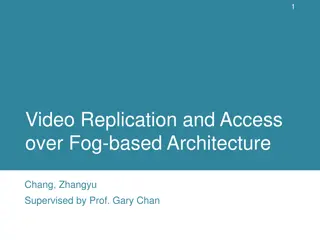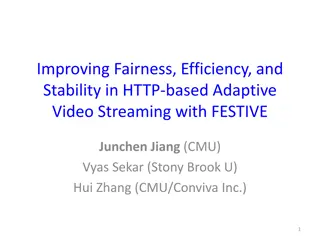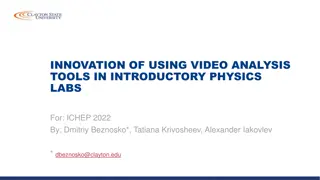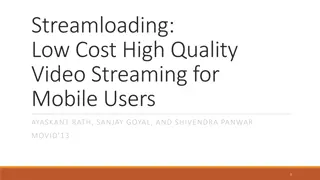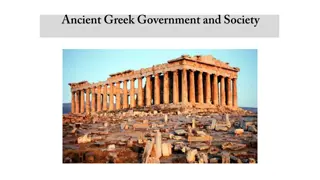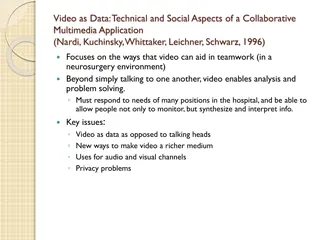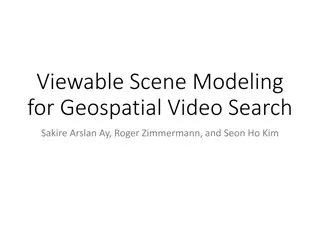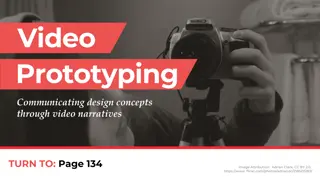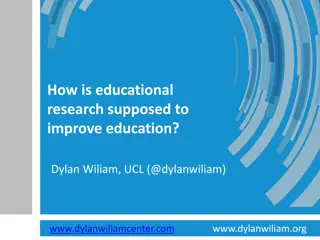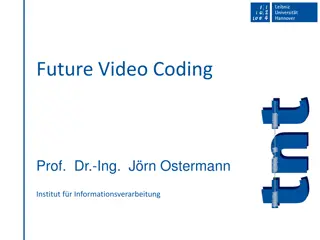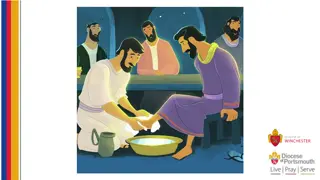Insightful Exploration of Video-Based Analysis in Educational Research
Dr. Lasse Savola's doctoral research focuses on video-based analysis of lesson structures, highlighting the benefits of using video in classroom research and professional development of educators. The method of lesson structure analysis introduced in the dissertation explores diverse paths to success in teaching. Utilizing video enables in-depth study of social processes, reduction of biases, and richer reporting of results, benefiting both researchers and educators.
Download Presentation

Please find below an Image/Link to download the presentation.
The content on the website is provided AS IS for your information and personal use only. It may not be sold, licensed, or shared on other websites without obtaining consent from the author.If you encounter any issues during the download, it is possible that the publisher has removed the file from their server.
You are allowed to download the files provided on this website for personal or commercial use, subject to the condition that they are used lawfully. All files are the property of their respective owners.
The content on the website is provided AS IS for your information and personal use only. It may not be sold, licensed, or shared on other websites without obtaining consent from the author.
E N D
Presentation Transcript
Video-Based Analysis of Lesson Structures Lasse Savola, PhD Fashion Institute of Technology SUNY New York, NY
Doctoral dissertation The method of lesson structure analysis was introduced in my PhD thesis entitled Video- based analysis of mathematics classroom practice: Examples from Finland and Iceland Teachers College, Columbia University, 2008
Large studies using lesson structure analysis Search for structure in diversity Trends in International Mathematics and Science Study (TIMSS) (1995, 1999) In 1999, 638 classes in 7 countries participated Study found that there are many paths to success The Learner s Perspective Study (LPS) (2006) More qualitative in nature Focused on lesson events, not the whole lessons
Benefits of video in classroom research 1. Enables the study of complex social processes 2. Helps eliminate the say/do discrepancy 3. Lessens recorder bias 4. Increases inter-coder reliability 5. Permits unlimited reanalysis
Benefits of video in classroom research 6. Allows for multiple viewpoints 7. Facilitates integration of qualitative and quantitative methods 8. Enables richer reporting of results 9. Exposes mechanisms and antecedents 10. Can be reduced to lesser forms of event portrayal
Video in professional development of educators 1. Illustrate various levels of thinking 2. Highlight effective practices 3. Show examples of student misconceptions 4. Provoke conversations about a problematic teaching moment 5. Focus on specific aspects of teaching 6. Provide a common ground experience
Video in professional development of educators 7. Contrast cases 8. Provide visions of what is possible 9. Compress experience 10. Support role-playing 11. Predict/see what happens 12. Build categories of pedagogical phenomena 13. Enable leaps in time scales (Pea & Hay, 2003)
Problems with video analysis 1. Verisimilitude and camera effects 2. Privacy and confidentiality 3. Educational colonialism 4. May be too persuasive, seductive 5. Missing contextual information 6. Evaluation of video research
Why Finland and Iceland? Cultural and political similarities In PISA 2006, Finland ranked #1 in mathematics and science, #2 in reading Despite spending lots of money per student, Iceland s scores were below average in reading and science and just above average in mathematics Icelandic gender problem
PISA: Finland and Iceland 570 560 550 FIN-Mathematics FIN-Reading FIN-Science ICE-Mathematics ICE-Reading ICE-Science 540 530 520 510 500 490 480 2000 2003 2006
Methodology Twenty schools ten in each country participated Two lessons per teacher were analyzed, although often three were taped Two cameras in the back of the classroom Lesson structure analysis using Videograph
Lesson structure analysis Two dimensions: Function and Form The pedagogical functions of lesson elements are based on Herbart s (1835) cyclical sequence of learning steps (review, lesson, practice) The categories for the forms of classroom interaction are sample-sensitive and stem from asking: Who is doing what? How are the participants interacting?
Lesson structure analysis The first pass categories are fixed (review, introducing new material, practice, other), the second pass categories are sensitive to the sample The method offers a way to investigate the different forms of classroom interaction by which teachers attempt to achieve their pedagogical goals One of the strengths of this open-ended method is its ability to capture unique, yet often subtle classroom practices
Research questions Does the video-based method of lesson structure analysis presented in this report extend the sensitivity of existing methods of lesson structure analysis such as those used in the TIMSS and LPS studies? Does the video-based method of lesson structure analysis presented in this report permit structural comparison of Finnish and Icelandic mathematics lessons? Is it feasible to conduct meaningful video-based pedagogical research on a small scale?
Some findings Despite the small sample size, some national patterns and cross-national differences were detected The Finnish lessons essentially followed the conventional Review-Lesson-Practice-script, whereas more than half of the Icelandic lessons exhibit versions of Individualized learning, a learner-based instructional philosophy Finnish lessons exhibited more classroom interaction, while many Icelandic lessons consisted only of one-on- one tutoring and no whole-class interaction
First-pass categories 70% 60% 50% FIN (n=20) 40% ICE (n=20) 30% 20% 10% 0% Review New content Practice Other Eleven Icelandic lessons were conducted using versions of Individualized learning.
First-pass categories 60% 50% 40% FIN (n=20) ICE* (n=9) 30% 20% 10% 0% Review New content Practice Other The difference in New content is statistically significant.
Forms of Review 90% 80% 70% 60% FIN (n=20) 50% 40% ICE* (n=9) 30% 20% 10% 0% Teacher presents Students on the board Class works together
Forms of Introducing New Content 90% 80% 70% 60% FIN (n=20) ICE* (n=9) 50% 40% 30% 20% 10% 0% Teacher Series of Students Students copy Students read presents connected work, teacher text questions helps
Forms of Practicing/Applying 80% 70% 60% 50% FIN (n=20) 40% ICE* (n=9) 30% 20% 10% 0% Teacher Students work, Students work, Class works discusses teacher helps teacher does not together help
Forms of Individualized learning 90% 80% 70% 60% 50% 40% 30% 20% 10% 0% Kikan-Shido Teacher in front Student in front
Individualized learning Should not be minimally-guided (Cognitive load theory) Could be a factor in the decline of Icelandic students academic achievement scores Could be a factor in the Icelandic gender question
Publication Sriraman, Bergsten, Goodchild, Michelsen, Palsdottir, Steinthorsdottir, & Haapasalo (Eds.). (2009). The Sourcebook in Nordic Research in Mathematics Education. Charlotte, NC: Information Age Publishing the first comprehensive and unified treatment of historical and contemporary research trends in mathematics education in Scandinavia.
Selected resources Clarke, Emanuelsson, Jablonka, & Mok (Eds.). (2006). Making connections: Comparing mathematics classrooms around the world. The Netherlands: Sense Publishers Goldman, Pea, Barron, & Derry (Eds.). (2007). Video research in the learning sciences. Mahwah, NJ: Lawrence Erlbaum Associates Hiebert et al. (2003). Teaching mathematics in seven countries: Results from the TIMSS 1999 video study. US Department of Education Pea & Hay. (2003). Report to the NSF: CILT Workshop on digital video inquiry in learning and education, 11/25-26, 2002. Stanford, CA: Stanford University
URL www.ru.is/lasse
